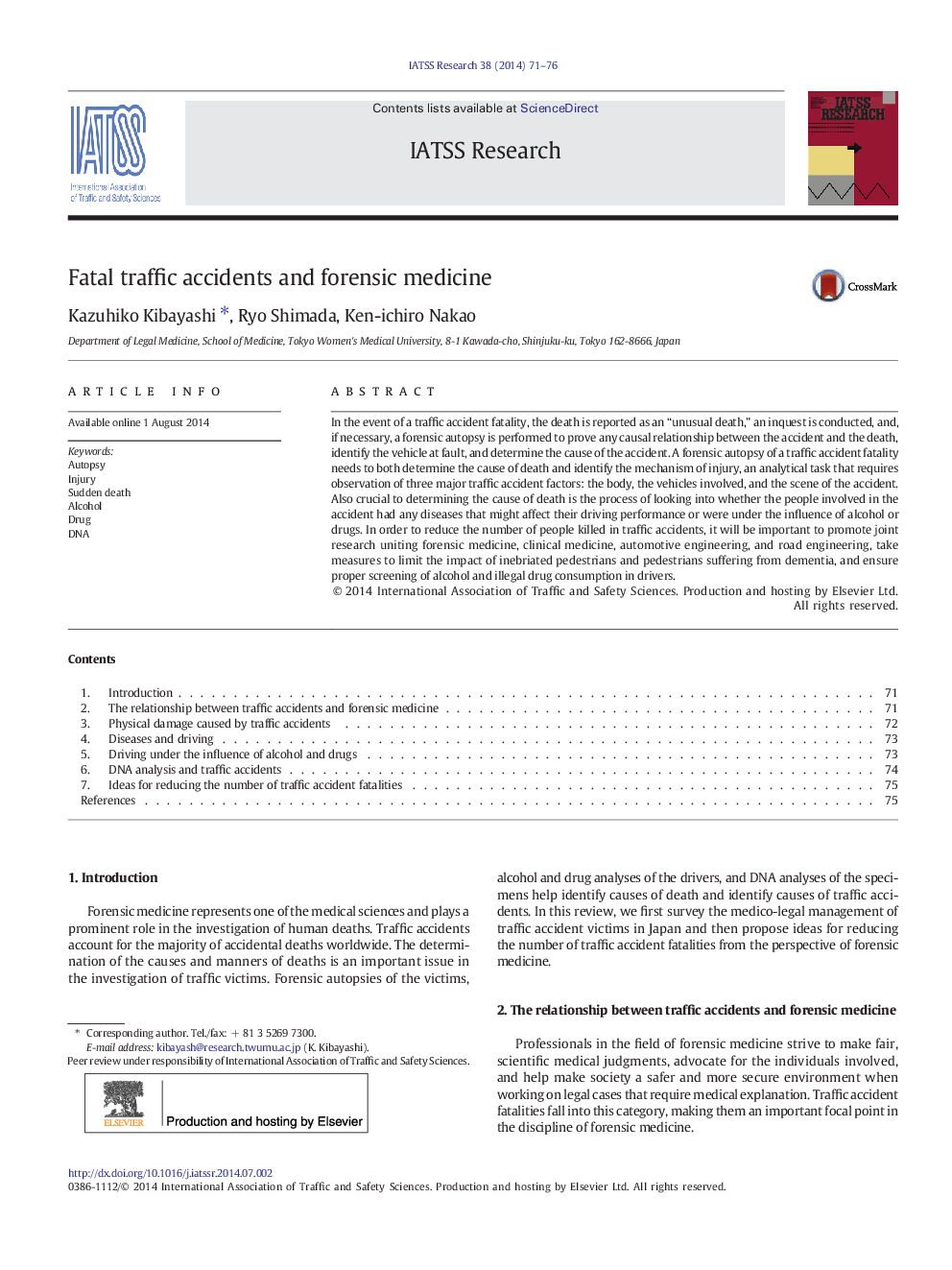| Article ID | Journal | Published Year | Pages | File Type |
|---|---|---|---|---|
| 1104638 | IATSS Research | 2014 | 6 Pages |
•We review the relationship between fatal traffic accidents and forensic medicine.•Forensic investigations are performed on all individuals killed in traffic accidents.•Screening tests for the use of alcohol and drugs are useful in evaluating drivers.•Pedestrians with alcohol intake or dementia are often involved in accidents.•Joint research by pathologists and engineers can help reduce the number of victims.
In the event of a traffic accident fatality, the death is reported as an “unusual death,” an inquest is conducted, and, if necessary, a forensic autopsy is performed to prove any causal relationship between the accident and the death, identify the vehicle at fault, and determine the cause of the accident. A forensic autopsy of a traffic accident fatality needs to both determine the cause of death and identify the mechanism of injury, an analytical task that requires observation of three major traffic accident factors: the body, the vehicles involved, and the scene of the accident. Also crucial to determining the cause of death is the process of looking into whether the people involved in the accident had any diseases that might affect their driving performance or were under the influence of alcohol or drugs. In order to reduce the number of people killed in traffic accidents, it will be important to promote joint research uniting forensic medicine, clinical medicine, automotive engineering, and road engineering, take measures to limit the impact of inebriated pedestrians and pedestrians suffering from dementia, and ensure proper screening of alcohol and illegal drug consumption in drivers.
